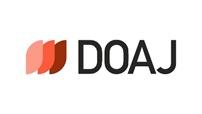Abstract
As one of the most popular forms of electronic commerce, cross-border e-commerce provides numerous consumer benefits, such as broad and deep product assortments at low prices. However, consumers tend to exhibit high involvement in cross-border e-commerce purchases due to high risks associated with such purchases.
The paper focuses on identifying causal relationships between e-commerce website traits (i.e., website trustworthiness, interactivity and convenience) and consumer satisfaction and along with loyalty. We proposed a reflective–reflective hierarchical model (first-order reflective and second-order reflective model) and used the Partial Least Square Analysis Statistical method to test the hypotheses.
The results demonstrated that website trustworthiness, convenience and interactivity were all positively related to consumer satisfaction. Also, higher satisfaction led to stronger customer loyalty, which may well increase revisit intentions. We also compared the strength of each path from a website trait to satisfaction. Results illustrated that the path from website convenience to satisfaction is the strongest among the three website traits.
In addition, we separately examined differences within Korean group and Chinese group. No statistically significant difference among website traits was found within Korean group. However, within Chinese group, we found that website convenience is the most important predictor of satisfaction. This indicates that Chinese consumers are more concerned about the website convenience than interactivity and trustworthiness when they make cross-border e-commerce purchases.
Moreover, this study investigated possible differences between Korean and Chinese group. We used multi-group analysis of Smart PLS 3.0 to test the results. It was shown that the two groups do not display statistically significant difference in trustworthiness, interactivity, or convenience in influencing customer satisfaction.
Finally, we presented further implications which are useful for understanding of the proposed model. Limitations and improvements of this research were presented, too.
Recommended Citation
Ting, Bai and Nam, Inwoo
(2016)
"A Comparative Study on Antecedents to the Customer Satisfaction with Cross-Border E-commerce in Korea and China,"
Asia Marketing Journal: Vol. 18
:
Iss.
2
, Article 4.
Available at: https://doi.org/10.15830/amj.2016.18.2.63
Creative Commons License

This work is licensed under a Creative Commons Attribution 4.0 License.




